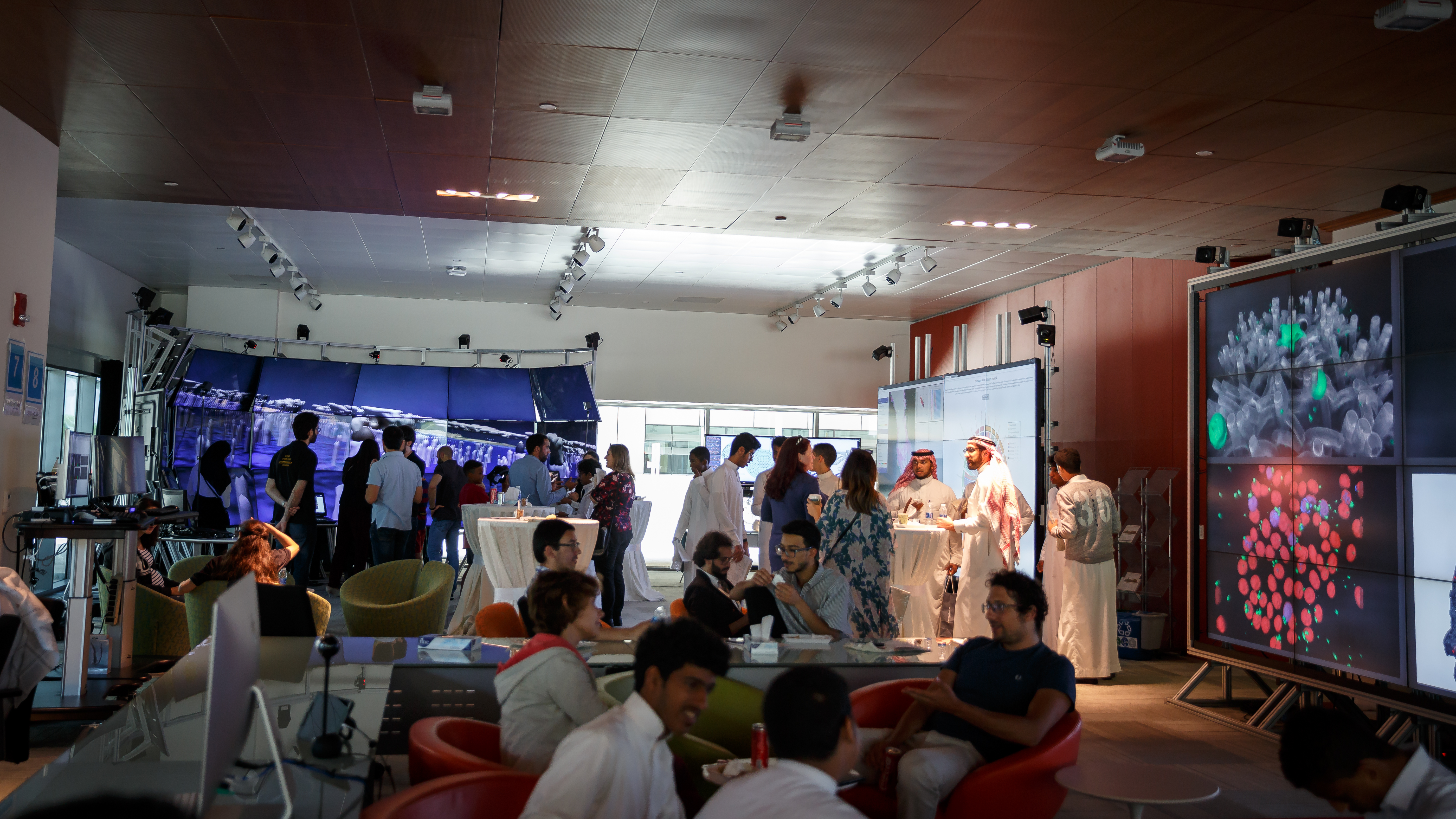Visualizing the future

The KAUST Visual Computing Center (VCC) welcomed guests to its Open House event on March 28 on campus. Photo by Asharaf K. AbdulRahman.
- By Andrea Hulsbosch, KAUST News
Visual computing is the science of sensing, modeling, simulating, processing, understanding, visualizing and displaying all forms of information. Over the past few decades, visual computing has become a key enabling technology for a diverse set of applications spanning scientific discovery, medicine, consumer electronics and entertainment, among others.
At KAUST, the Visual Computing Center (VCC) draws its expertise from a pool of disciplines, including computer science, electrical engineering, mechanical engineering and applied mathematics. The center utilizes a range of application domains to tackle problems of unique importance to the Kingdom and creates commercial opportunities in the form of startup companies as well as licensing agreements and patents.
The VCC shared its interdisciplinary approach to device development, image and video understanding, semantic analysis, geometric modeling, simulation and visualization with KAUST colleagues and community members at the recent Visual Computing Center Open House held on March 28.

KAUST students, faculty, staff and community members and visitors enjoyed the many visual computing displays on offer during the recent on campus Visual Computing Center Open House. Photo by Asharaf K. AbdulRahman.
FalconViz installed a virtual reality driving simulator to offer an almost real driving experiences to the public. The booth consisted of a high-end computer with an attached steering wheel and foot pedals, as the computer was running a specially developed software. This innovative invention will be used for learning purposes. Today, this technology is more relevant to the Kingdom than ever before due to the large new pool of eligible drivers in Saudi Arabia. They will be able to gain their first experience on the (virtual) road in a safe environment.
Over the last year, Matthias Muller, Neil Smith and KAUST Assistant Professor Bernard Ghanem successfully trained a drone to autonomously fly through unknown race courses at high speed. They have also trained a deep neural network that is able to drive a car autonomously through different towns in simulation. What makes their work extraordinary is that their technology relies on images only and—contrary to common systems—doesn't use GPS signals or sensors.

On campus visitors delighted in the Visual Computing Center's many interactive displays during the center's Open House event on March 28. Photo by Asharaf K. AbdulRahman.
Pupils from the University's neighboring village of Thuwal also got to discover what it takes to "get in the visual game." They were welcomed to the Open House by KAUST staff and guided around the booths while provided with information about all the projects displayed.
The event brought together several visual computing innovations and showcased experts' work. It was a great opportunity to see short presentations and demonstrations from research conducted in the center and talk to KAUST faculty, students and staff about the evolution of visual computing.
Related stories:
-
KAUST launches Fugro Center of Excellence for Marine Technology
-
Agreement signed for building of SaudiVax R&D Vaccine center
-
Lee named to top HPCwire list
- Understanding networked systems
- Hackers and the Internet of Things
-
The sky's the limit for FalconViz

